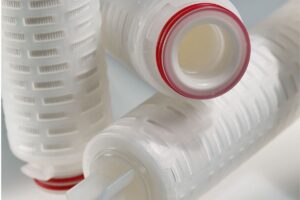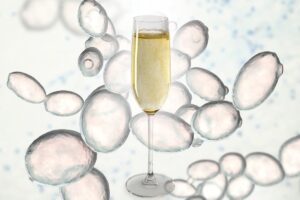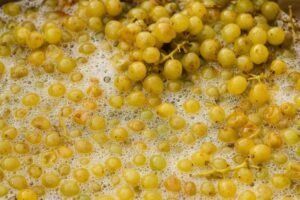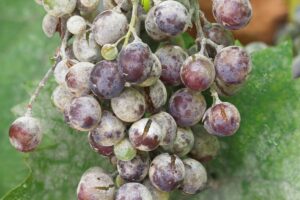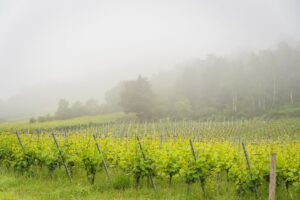Malolactic Fermentation: Best Practices and Troubleshooting Tips
Malolactic fermentation (MLF) is crucial in winemaking for reducing acidity, enhancing flavor, and improving stability. By converting sharp malic acid into softer lactic acid, MLF softens the wine, creating a smoother, more palatable profile while also adding complexity, such as buttery or creamy notes, particularly in wines like Chardonnay. This process, which typically occurs after primary fermentation, also stabilizes the wine by preventing potential spoilage from spontaneous malic acid fermentation. MLF is common in red wines and some white wines and is often induced by inoculating the wine with a selected bacterial strain to achieve a specific texture, flavor, and overall quality of the wine.
MLF is much slower and less turbulent than primary (alcoholic) fermentation; taking weeks, even months, to complete. The fermentation is complete when malic acid levels are measured below 0.1 g/L.
Recommended practices for a successful MLF:
- For easier acclimatization, keep the wine below 15% alcohol and above pH 3.1. Consult the recommendations for your selected strain of bacteria for specific parameters.
- Maintain a temperature between 63–77°F (17–25°C) to activate the bacteria. Temperatures above 77°F or below 50°F can be detrimental or even fatal to bacteria.
- Malolactic bacteria tend to be quite susceptible to and inhibited by the presence of sulfur dioxide (SO2). Maintaining a free sulfur dioxide (FSO2) concentration below 10 ppm and a total sulfur dioxide (TSO2) below 50 ppm is necessary for bacterial activity.
- Avoid over-clarifying the wine before MLF to prevent the bacteria from getting hungry. A combination of yeast hulls and malolactic bacteria nutrients can be added to increase turbidity.
- The malolactic culture should be added at the end of the primary fermentation. A malolactic bacteria nutrient can be added immediately prior or within a few days after that.
- Add an appropriate amount of bacteria, following the manufacturer’s addition instructions.

Identifying and Correcting a Sluggish Fermentation:
Malolactic fermentation can be a slow process, but sometimes it slows too much or stops altogether before the malic acid has been fully degraded. Below are recommended parameters to evaluate if the MLF activity seems to be slowing. Start by assessing the physicochemical state of the wine to ensure it is conducive to MLF. After evaluating the wine, assess the health of the bacteria. Sometimes a small intervention is all that is needed to get back on track.
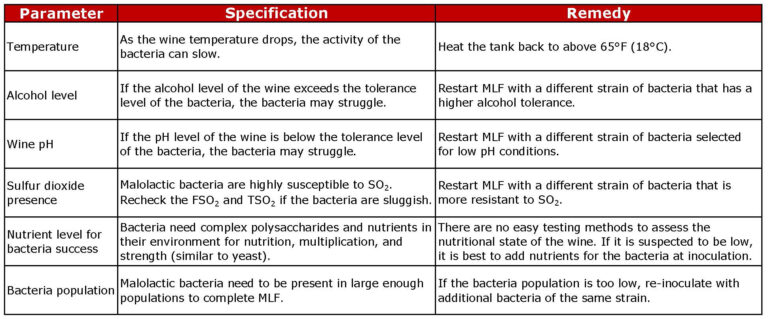
If none of the above seem to work, it may be necessary to restart the stuck fermentation.
Restarting a Stuck MLF:
If MLF stalls and cannot be revived, it’s essential to remove any toxins and lees from the wine before restarting the process. Detoxifying the wine before MLF is a step often overlooked or assumed to be handled by yeast hulls, but taking this step significantly increases the chances of successful inoculation and helps ensure that MLF proceeds as intended.
- Detoxify the Wine: Add 2 lb/1000 gallons (24 g/hL) of Malo Detox. Malo Detox reduces and adsorbs toxin residues naturally present in wine at the end of alcoholic fermentation, and is specially designed to detoxify wine before inoculating it with malolactic bacteria.
- Dissolve Malo-Detox in 10 times its weight in clean water at least an hour before adding it to the tank. Mix gently by pumping over.
- Settle and Rack: Allow Malo-Detox to settle, then rack or filter the wine off the lees.
- Temperature Adjustment: If needed, raise the wine’s temperature to above 65°F (18°C).
- Nutrient Addition: Add 1 lb/1000 gallons (12 g/hL) of Malo NutriBact. Malo NutriBact is a yeast nutrient specially formulated from natural yeast derivatives and micronutrients to promote a fast and complete MLF, particularly in wines with high levels of stress factors.
- Suspend Malo NutriBact in warm water (68°F/18°C) and add it to the wine before introducing the bacteria culture.
- If the wine was filtered in step 2, add 1/8 lb/1000 gallons (1.5 g/hL) of Springcell Yeast Hulls for turbidity and mix the tank thoroughly.
- Inoculate with Bacteria: Add a full dose of Malo-Plus Malolactic Bacteria.
- Monitor Progress: Continue monitoring malic acid levels. It may take 2–4 days for the bacteria to show signs of activity.
ATPGroup offers an exclusive and comprehensive range of highly effective freeze-dried malolactic bacteria cultures, designed to meet virtually any MLF condition. Our unique production method introduces stress factors throughout the process, ensuring maximum activity upon inoculation.
For managing even the most challenging MLF conditions, the Malo-Plus and Malo-Plus HA strains, with their high alcohol and low pH tolerance, stand ready. If you’re aiming for the aromas and mouthfeel of moderate diacetyl levels, the Malo-D is your go-to choice. Seeking more complexity? Our multi-strain contender, Malo-Multi, is ideal. And for heightened complexity and enriched mouthfeel, Malo-Vigna excels even in the most trying circumstances. The Malo range is available in dose sizes ranging from 660 gallons to 100K gallons, to optimize dosage for all wineries.
The best strategy for effective completion of malolactic fermentation is to combine the strength of the Malo-Plus range with Malo Detox and Malo NutriBact ML nutrients. Pre-inoculation, Malo Detox curbs natural post-primary fermentation toxins and fosters a favorable microbial environment. Malo NutriBact, packed with natural yeast derivatives and micronutrients, propels a swift and thorough MLF, particularly in stress-laden wines.
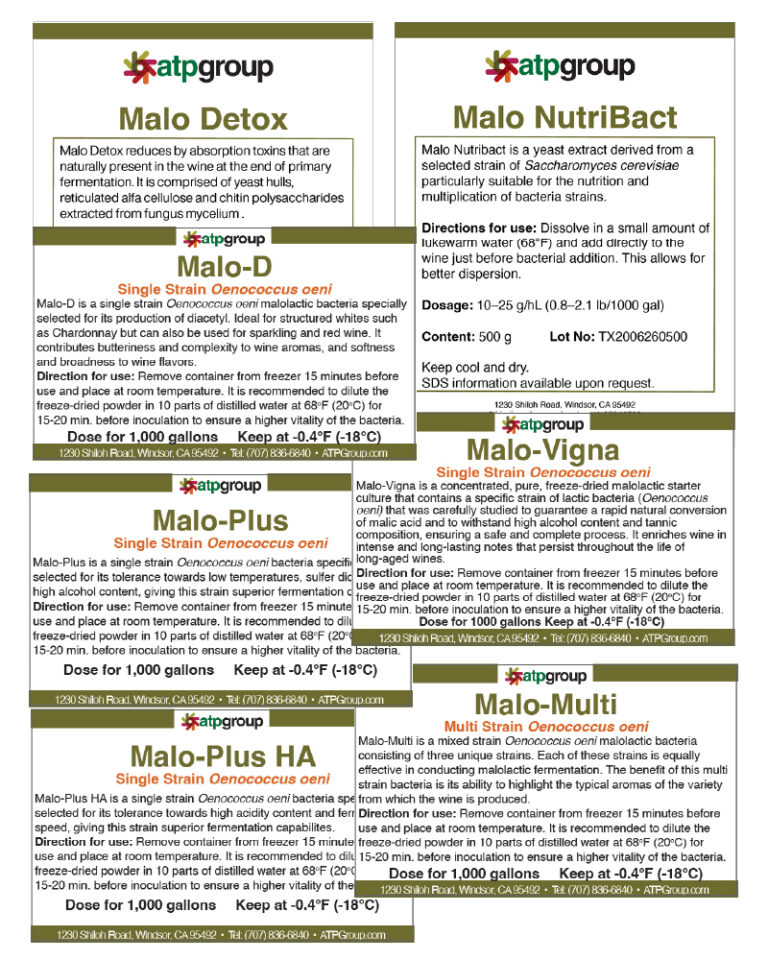
Choose the best Malolactic Bacteria for your wine:
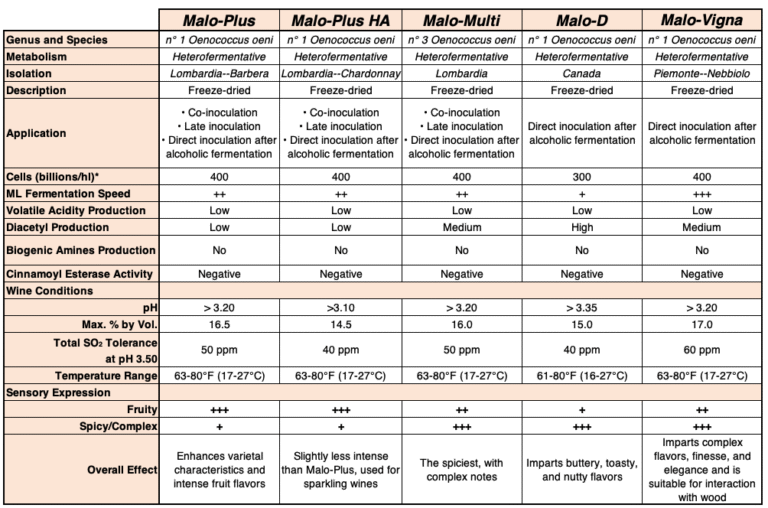
For more information on our ML products or for help designing a protocol specific to your needs, contact your ATPGroup Enology Products Specialist or call (707) 836-6840.
